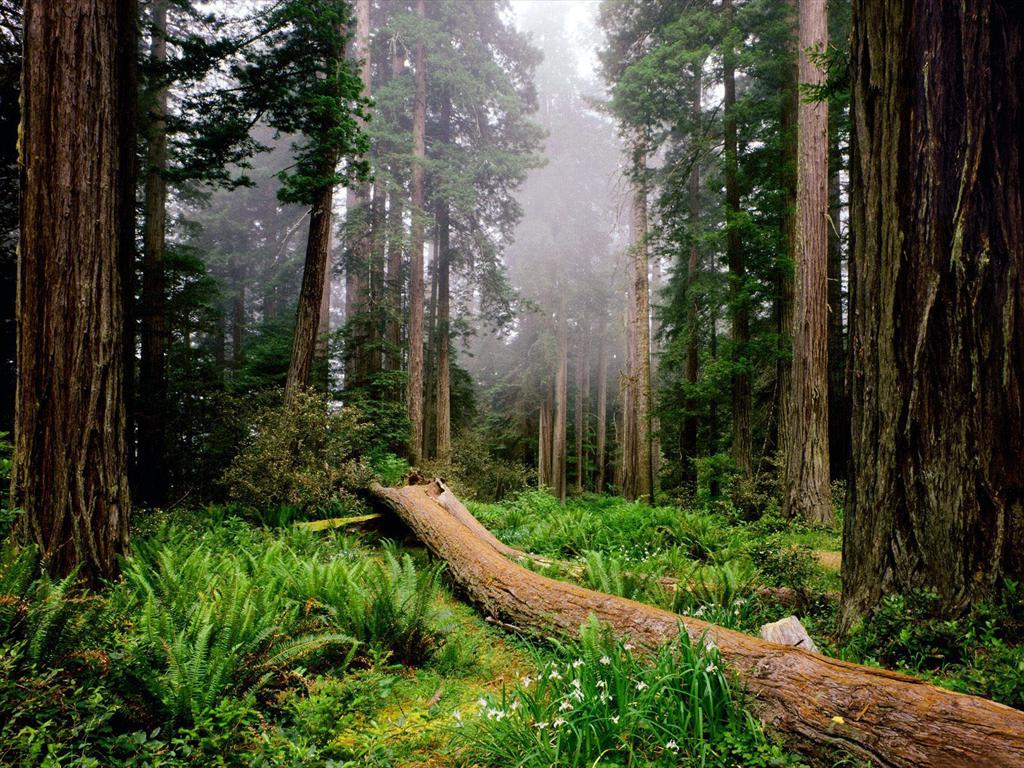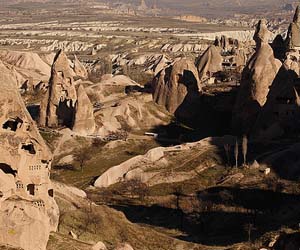植物拯救了地球,阻止寒冷灭绝之灾!
By 苏剑林 | 2009-07-09 | 18788位读者 |笔者语录:现在温室效应愈演愈烈。不过,在千万年前,情况正好相反,二氧化碳含量的急剧下降,使地球越来越冷。而一个“救星”的出现挽救了地球!这个伟大的“救星”,就是我们随处可见的植物。现在,就让我们随着《新科学家》的脚步,去看看那远古的“救星”!
正文:
对于植物,除了它们所带来的显而易见的好处外,我们似乎还应该为我们的生存而感激它们,因为在2500万年前,它们帮助阻止了地球的一场冰冻寒冷的灾难!
大约在5000万年前,地球是一个名副其实的温室——就连两极也没有冰封,而鳄鱼就生活在北极地区。接着,大气中二氧化碳的含量却下降到大约 1000-1500 ppm (parts per million,百万份之一),地球开始降温。
在2400万年左右,由于喜马拉雅山脉和安第斯山脉的隆起,导致了岩石的大规模风化。在这一风化过程中,吸收了空气中大量的二氧化碳,同时减少了温室效应,使地球的气温降低了下来。
不过还是有一个“救星”让地球的二氧化碳水平保持在一个稳定水平,使地球不至于变成一个巨大的“冰室”。现在,来自美国康涅狄格州的耶鲁大学的马克帕加尼(Mark Pagani)和他的同伴们已经找到了这个“救星”——植物。
在二氧化碳结合成镁、钙碳酸盐的过程中,树木扮演着一个重要的角色:当山体增长,岩石会分裂开来,然后被运送到丘陵上,接着树木会使埋藏在泥土中的岩石分解成其他矿物,然后这些矿物就会跟空气中的二氧化碳结合。石灰岩的形成亦是如此。
相反的结果:
该研究小组使用计算机模型来模拟植物对气候和大气二氧化碳的敏感度,并且发现,当大气中二氧化碳含量降低到200ppm时,植物便会感到“饥饿”和“窒息”(缺乏光合作用的必要原料)。这会造成相反的结果:抑制岩石风化成碳酸盐,从而放缓自然界中二氧化碳量的下降速度,令二氧化碳水平上升。
“二氧化碳水平不断下降,会突破最低的限度,在最近的2000万年里或多或少都会出现这种情况,”美国华盛顿卡内基学会、团队的成员 肯·卡尔代拉(Ken Caldeira)表示,“植物[发挥着]重要作用,防止了地球变成一个极度寒冷的地方。”
印地安那州的拉法叶普度大学的一位气候学家 马修·胡卜(Mathew Huber)指出,这项工作提供了一个“很好的解释,描述了气候系统中的负反馈的相关问题”。
原来来自《新科学家》杂志网站,以下是英文原文:
Plant life saved Earth from an icy fate
Besides the obvious benefits they bring, it looks like we owe our very existence to plants, which helped prevent the Earth from freezing over during the past 25 million years.
About 50 million years ago, Earth was a hothouse – the poles were ice free, and crocodiles lived in the Arctic. Then, the concentration of carbon dioxide in the atmosphere started dropping from around 1000-1500 parts per million (ppm), and the Earth began to cool.
By about 24 million years ago, the uplift of the Himalayan and Andes mountain ranges led to large-scale weathering of rocks, a process that removes massive amounts of CO2 from the atmosphere. This reduced the greenhouse effect and cooled the planet.
But something kept the CO2 levels from dropping beyond a certain point, preventing Earth from turning into an icehouse. Now, Mark Pagani of Yale University in New Haven,
Connecticut, and colleagues have identified our saviours: plants.
Trees play an important role in the sequestration of atmospheric CO2 in magnesium and calcium carbonate rocks. As mountains grow, rocks break down and become transported to the
foothills, where trees hold them in place in the soil and break them down into minerals. These then combine with CO2 to form, for example, limestone.
Negative feedback
The team used computer models to simulate the sensitivity of vegetation to atmospheric CO2 and climate, and found that as the CO2 concentration dropped to about 200 parts per million, the plants started starving and suffocating. This caused a negative feedback, preventing weathered rocks from turning into carbonates, thus putting a natural brake on the sequestration process and letting CO2 levels rise again.
"The carbon dioxide level came down and banged up against this lower limit, and has more or less been banging up against this lower limit for the last 20 odd million years," says team member Ken Caldeira, of the Carnegie Institution of Washington in Stanford, California. "Plants [played] a critical role in preventing the Earth from going into a deep freeze."
Mathew Huber, a climate scientist at Purdue University in Lafayette, Indiana, says that the work provides a "nice explanation of a negative feedback in the climate system".
转载到请包括本文地址:https://kexue.fm/archives/15
更详细的转载事宜请参考:《科学空间FAQ》
如果您还有什么疑惑或建议,欢迎在下方评论区继续讨论。
如果您觉得本文还不错,欢迎分享/打赏本文。打赏并非要从中获得收益,而是希望知道科学空间获得了多少读者的真心关注。当然,如果你无视它,也不会影响你的阅读。再次表示欢迎和感谢!
如果您需要引用本文,请参考:
苏剑林. (Jul. 09, 2009). 《植物拯救了地球,阻止寒冷灭绝之灾! 》[Blog post]. Retrieved from https://kexue.fm/archives/15
@online{kexuefm-15,
title={植物拯救了地球,阻止寒冷灭绝之灾!},
author={苏剑林},
year={2009},
month={Jul},
url={\url{https://kexue.fm/archives/15}},
}












April 1st, 2022
CO2果然是气温调节剂